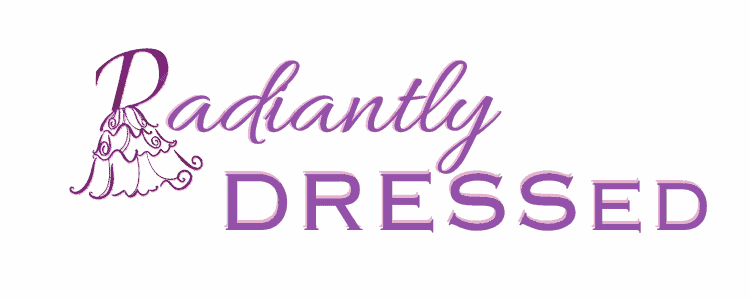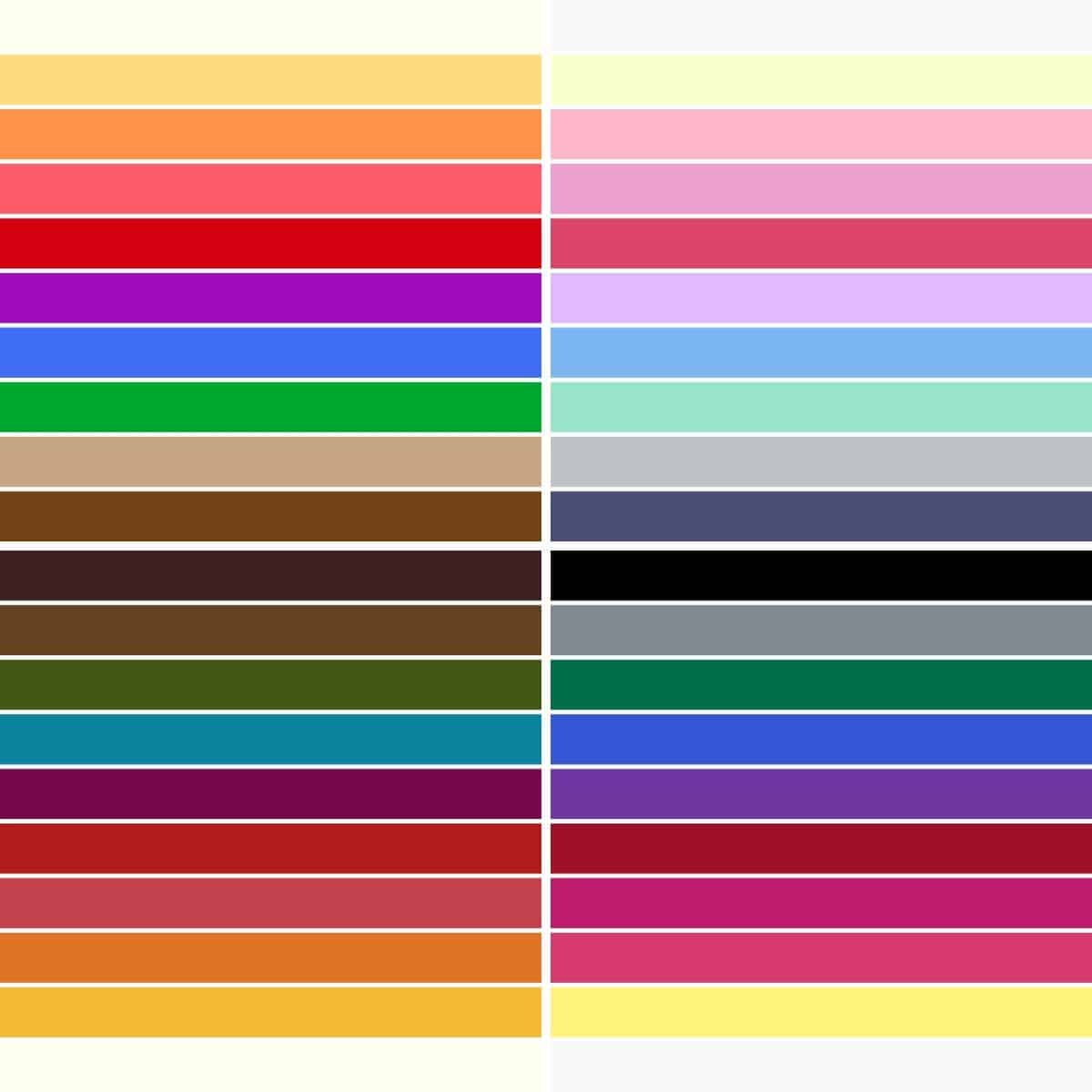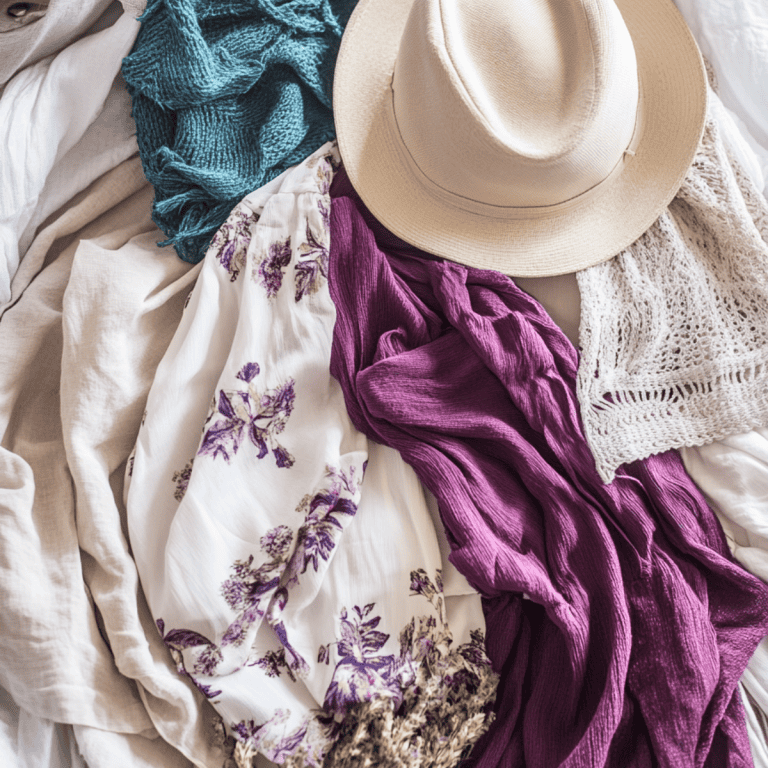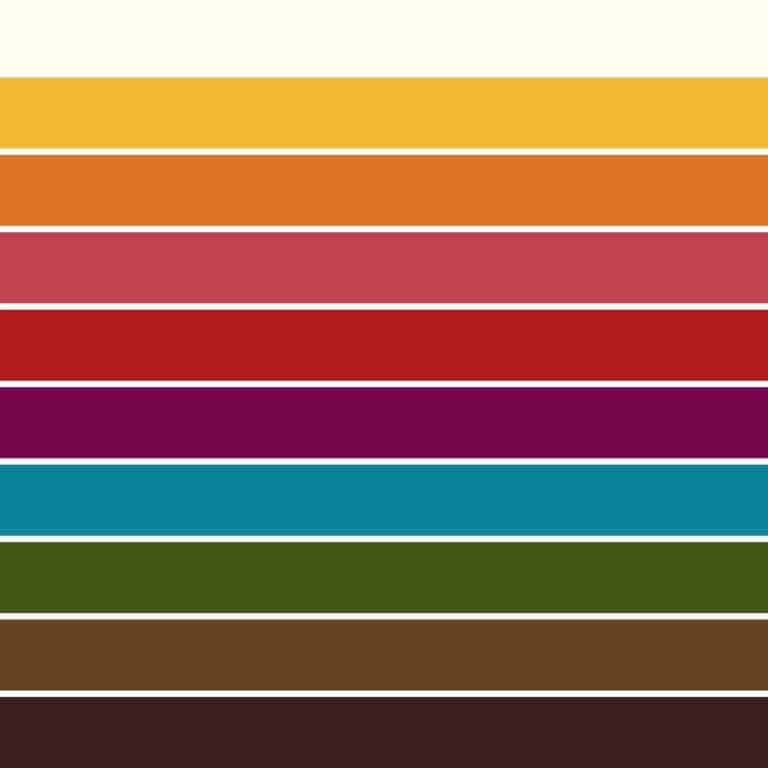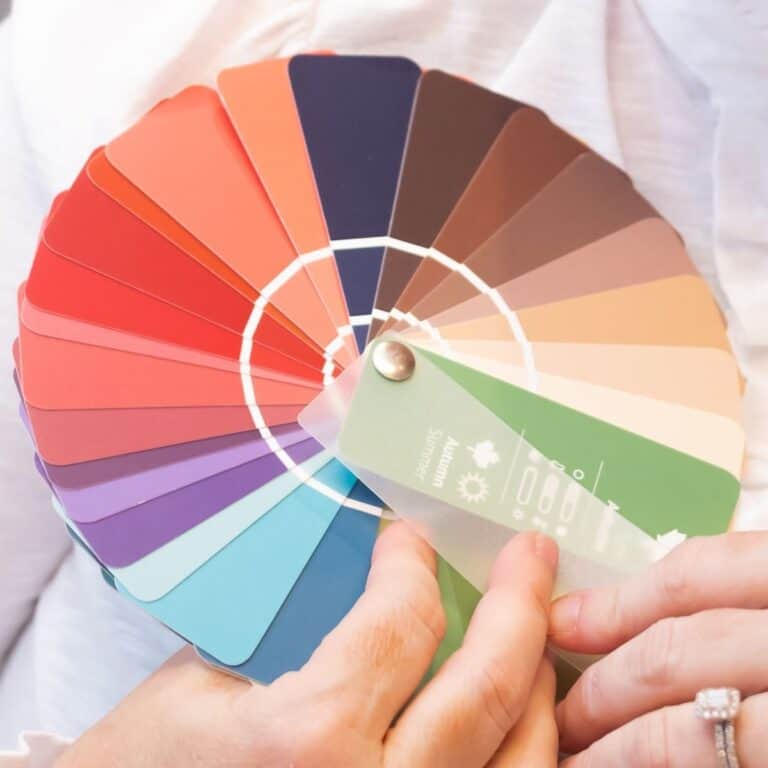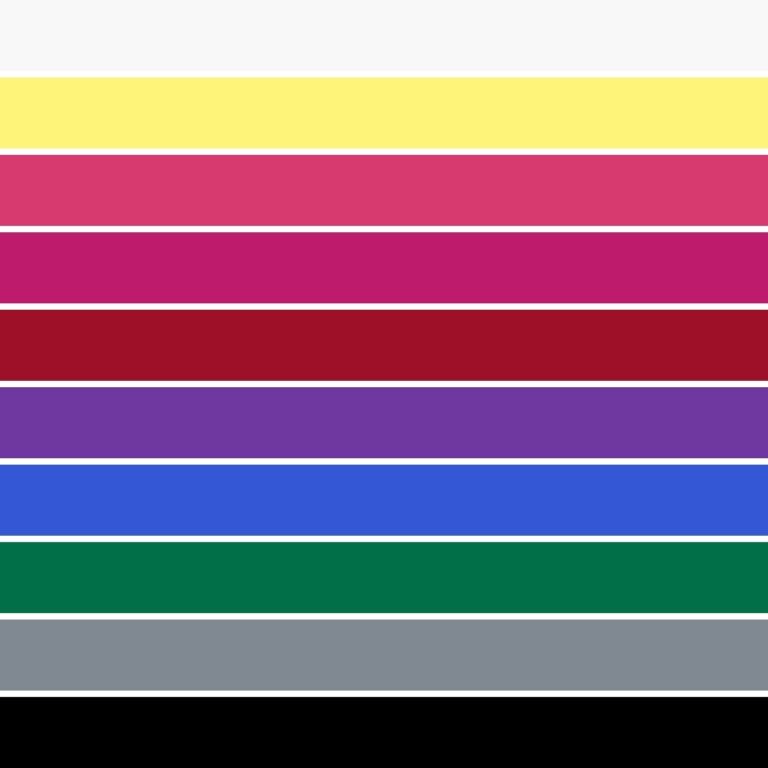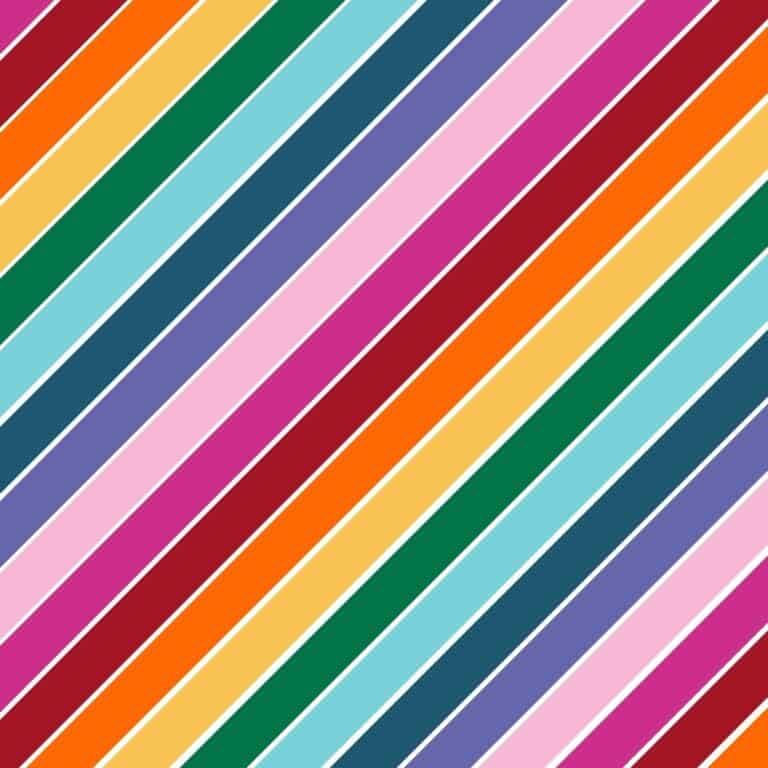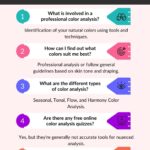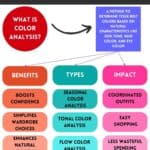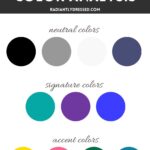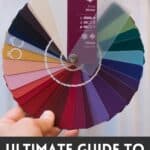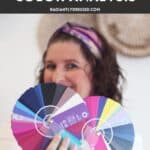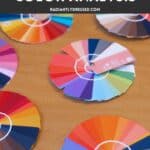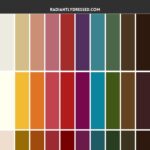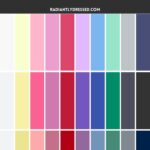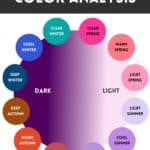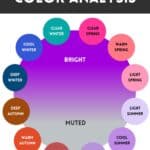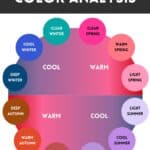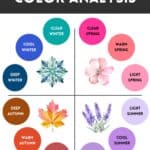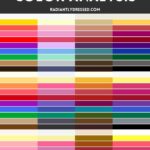Unlock your true style potential by diving deep into color analysis, a comprehensive approach to enhancing your wardrobe and boosting your confidence.
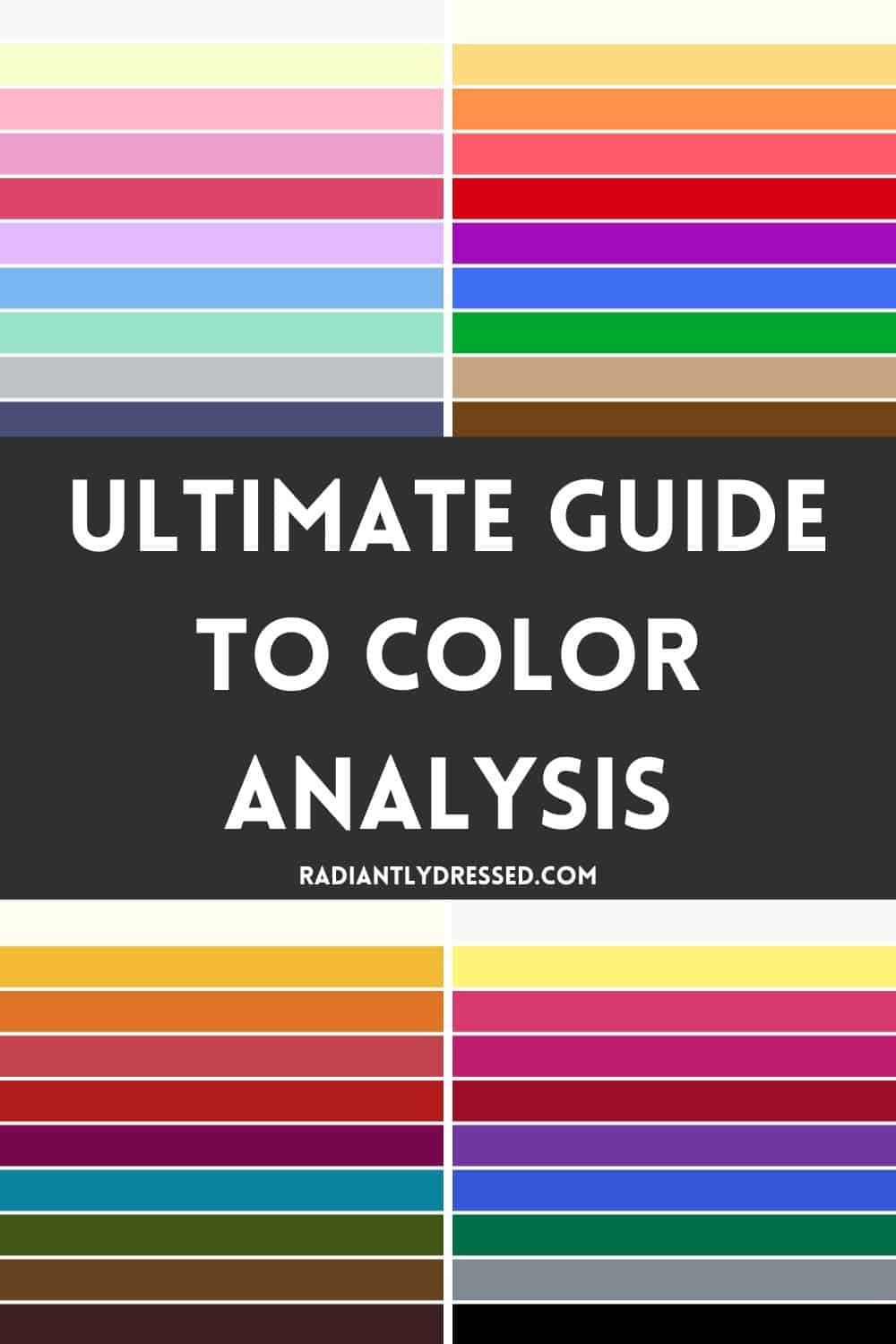
Are you tired of wearing colors that just don’t seem to work for you? Do you have a closet full of clothes, yet still feel like you have nothing to wear? If these scenarios sound familiar, it’s time to consider color analysis.
This systematic approach helps you identify the shades that naturally enhance your skin tone, eye color, and hair color. Armed with this knowledge, you can make smarter choices not just in your wardrobe, but also in your makeup selection and home decor.
While the concept of color analysis has been around for years, it’s seeing a resurgence, thanks to new digital tools and a wave of social media influencers sharing their experiences.
The technique often involves figuring out your skin tone, hair color, and eye color, then categorizing you into a “season”—Spring, Summer, Autumn, or Winter. Each season comes with a curated palette intended to complement your natural coloring and elevate your overall look. Knowing your season simplifies the task of combining colors, making your style choices more cohesive.
Whether you’re an avid follower of fashion or just someone looking to boost your self-confidence, color analysis offers tangible benefits. By understanding your unique color profile, you can make well-informed decisions about your wardrobe, makeup, and even the color scheme of your living space. Read on to delve deeper into the how-tos and advantages of color analysis.
Key Takeaways
- Color analysis helps you determine which colors complement your natural features.
- Each “season” of colors has a specific palette designed to flatter your natural coloring.
- Understanding your personal color palette can help you make more informed decisions when it comes to fashion, makeup, and personal style.
Table of Contents
The Importance of Color Analysis
Understanding your ideal color palette is not just about fashion; it’s an essential step for anyone wanting to simplify their wardrobe and elevate their look. Through color analysis, professionals like myself assess your natural features—skin tone, hair color, and eye color—to pinpoint which shades make you shine.
You don’t just wear these colors; you feel them. When you put on hues that flatter your skin tone, you radiate confidence and put-togetherness. It’s not uncommon for this shift to garner positive attention, offering an extra boost to your self-esteem.
Moreover, knowing your best colors streamlines your shopping process, saving you both time and money. No more second-guessing or impulse purchases that collect dust in your closet. Instead, you focus on acquiring pieces that you can effortlessly mix and match, creating a wardrobe that’s not just stylish but also versatile and efficient.
In summary, mastering your colors isn’t a frivolous endeavor. It’s a vital part of establishing a wardrobe that complements you on multiple levels, making you not just look good but also feel truly yourself.
What is Color Analysis?
Definition and History
Color analysis is the study and classification of an individual’s natural color characteristics—namely their skin tone, hair color, and eye color—to determine the colors that complement them the most. This knowledge aids in wardrobe selection, makeup choices, and even home décor. But how did this practice come to be?
Suzanne Caygill and the Four Seasons
The concept of color analysis as we know it today finds its roots in the work of Suzanne Caygill. Her 1980 book “Color: The Essence of You” popularized the idea of associating individual color palettes with the four seasons: Spring, Summer, Autumn, and Winter. Each season was linked to specific color families that would ideally enhance an individual’s natural features.
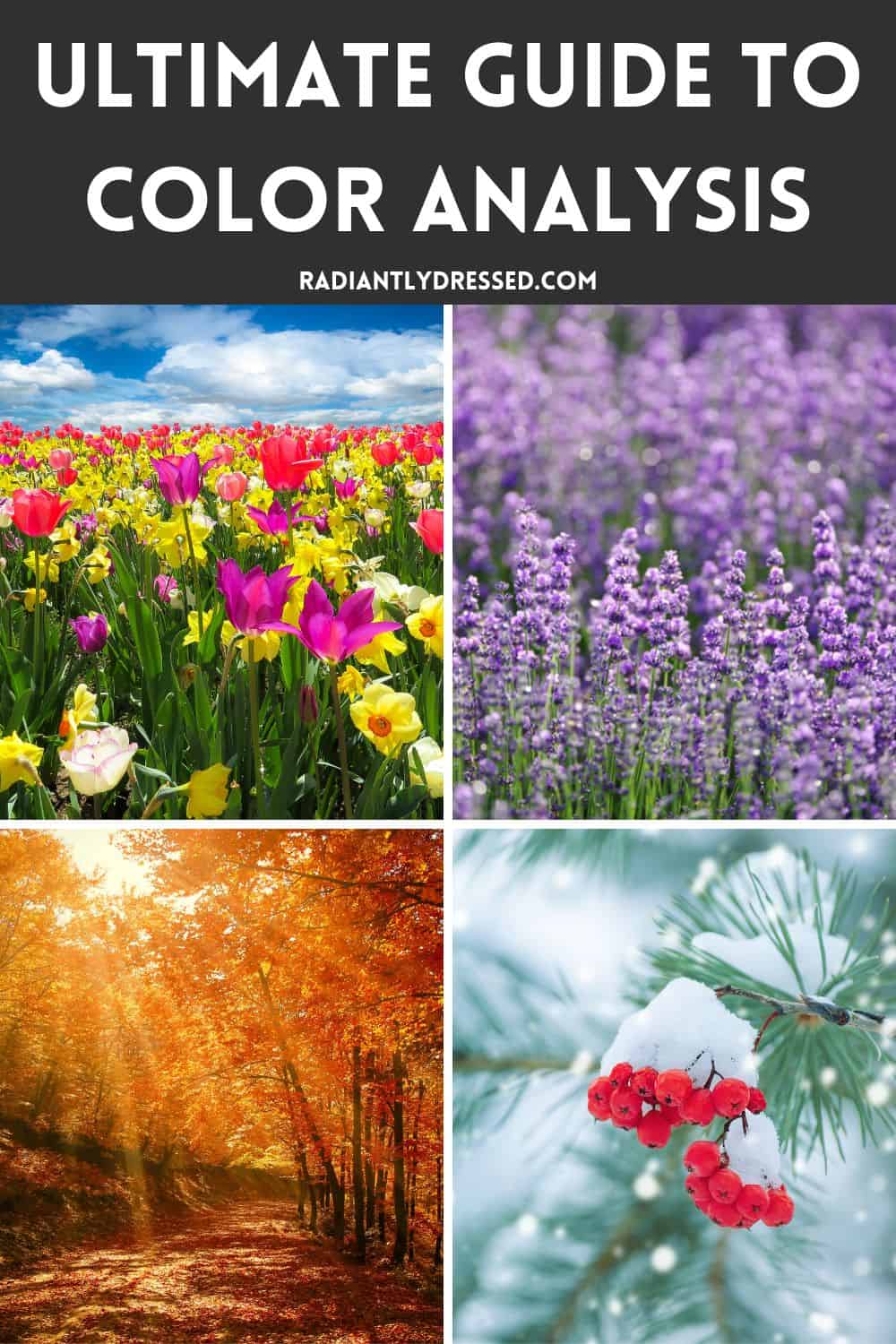
Explosion in the ’80s
The ’80s saw a surge in the popularity of color analysis, with various consultants and authors building upon Caygill’s foundational work. Books like “Color Me Beautiful” by Carole Jackson brought the idea to the mainstream, promoting the concept of “seasonal analysis.” Women across the globe started using color swatches to identify their ideal shades, often seeking the help of trained consultants for more personalized advice.
Emergence of New Systems
As the field evolved, so did the methodologies. Systems started to expand beyond the initial four seasons, incorporating blends between them, such as “Soft Summer” or “Clear Winter.” Methods like tonal analysis and flow analysis came into being, offering a more nuanced way to classify individual color profiles. My approach, holistic analysis, merges several different aspects to go beyond basic color principles to look at how color affects the whole woman.
The Digital Age
With the advent of technology, color analysis has found new platforms for growth. Online tools and software began offering digital color analysis, making it easier for people to discover their ideal shades from the comfort of their homes. However, like anything digital, these tools come with their own set of pros and cons, which we’ll discuss later in the article.
The Social Media Effect
Platforms like YouTube and TikTok have seen an uptick in color analysis content, from influencer-driven tutorials to personal journeys documented in short videos. While the viral nature of these platforms helps spread the word about color analysis, the quality and accuracy of the information can vary significantly.
The Role of Color Analysis in Image Consulting
Color analysis is more than just identifying the “right” colors for you; it’s a crucial step in the image consulting process, informed by a deep understanding of color psychology, current trends, and design theories.
Rather than imposing a one-size-fits-all palette, the analysis is tailored to meet your specific needs and expectations, serving a diverse range of clients from various walks of life.
This foundational assessment is about more than just aesthetics. It sets the stage for the comprehensive journey of curating a signature style and simplifying your wardrobe.
With the expertise to align your optimal colors with your broader style goals, color analysis transforms not just your wardrobe but also your daily life, streamlining choices and boosting your confidence.
By leveraging expert knowledge, the goal is to empower you with choices that make you feel confident, happy, and aligned with who you truly are. In this way, color analysis serves as the cornerstone for all other style decisions, setting you up for a more effortless and joyous daily dressing experience.
Color Dimensions and Theory
Color analysis is based on the principles of color theory, which explains how colors mix, match, and contrast with one another. Color theory defines color dimensions such as hue, saturation, and value, which are used to describe the properties of color.
Understanding Color Analysis
Color analysis is a process that helps you identify the colors that complement your natural skin tone, eye color, and hair color. By understanding the colors that suit you best, you can create a wardrobe that highlights your best features and makes you look and feel your best.
Color Dimensions
Hue refers to the actual color of an object, such as red, blue, or green. Saturation refers to the intensity or purity of a color, with highly saturated colors being more vivid and less saturated colors being more muted. Value refers to the brightness or darkness of a color, with lighter colors having higher values and darker colors having lower values.

Chroma, also known as saturation or intensity, refers to the strength of a color in relation to its brightness. Chroma is a measure of how much color is present in a particular hue. A high chroma color is pure and intense, while a low chroma color is more muted and subdued.
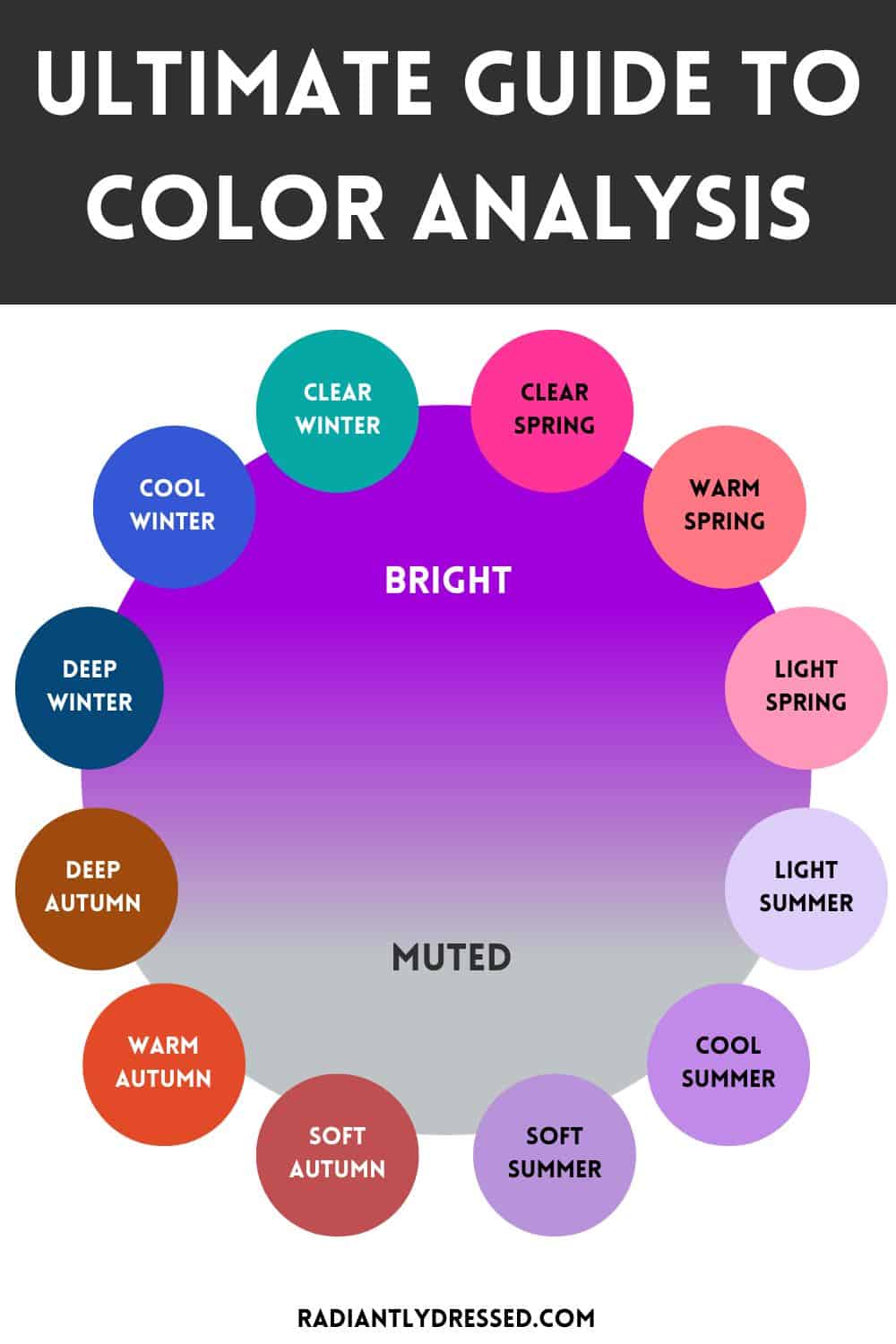
Temperature is another important aspect of color analysis. Colors are often described as either warm or cool, based on their underlying tones. Warm colors have yellow, orange, or red undertones, while cool colors have blue, green, or purple undertones.

Neutral colors, such as black, white, gray, and beige, are also an important part of color analysis. These colors can be used to balance out brighter or more intense colors, or to create a more sophisticated or understated look.
For the purposes of seasonal color analysis, the three attributes of hue, value, and chroma are the most important and help to define what season you are.
Color Analysis Systems
There are several different color analysis systems that are used to determine which colors are most flattering for an individual. These systems use a combination of draping, makeup, and other techniques to help identify the colors that work best for you.
Sci-Art
The Sci-Art method, developed by Kathryn Kalisz, is known for its meticulousness and emphasis on scientific rigor. Using a set of precision-dyed drapes, this method focuses on how different colors interact with an individual’s unique skin tone. A distinguishing feature of the Sci-Art approach is its unwavering belief that in-person draping is the only accurate means of conducting color analysis. The system also adheres strictly to defined seasonal categories, asserting that there is no crossover between them. Clients typically receive a detailed color fan for easier wardrobe coordination and shopping.
Tonal Analysis
Tonal Analysis simplifies the process by categorizing individuals into one of six primary color groups: Light, Dark, Bright, Soft, Cool, and Warm. This approach is particularly user-friendly and easy to grasp, making it ideal for those who find other methods overwhelming. By placing the emphasis on just one dimension of color theory, it allows for greater flexibility when selecting colors. This is especially beneficial for individuals who are extremely neutral and find it challenging to identify with more complex seasonal categories.
Flow Analysis
Flow Analysis takes the idea of seasonal color classification and extends it, allowing for a more nuanced understanding of how colors work for each individual. In this approach, each of the 12 seasons “flows” into another, borrowing elements from adjacent seasons, like hue, value, and chroma. This flexibility accommodates the uniqueness of each person, recognizing that while there are traditional flows for each season, individual characteristics may diverge from the standard.
Flow Analysis often places the most weight on the skin’s reaction to colors, though different systems within this approach may consider hair and eye color to varying extents. Because each individual is unique, you may find that you don’t strictly adhere to one “standard” flow but instead have characteristics that borrow from neighboring seasons.
16 System Analysis
The 16 System Analysis emerged as a response to the perception that the existing 12-season system might not capture the full range of human color diversity. It aims to provide more specific, nuanced categories by splitting some of the broader seasons into finer subdivisions. While the intent is to offer a more tailored solution for those who feel they don’t neatly fit into the 12 existing categories, it’s worth noting that most individuals can typically find a fairly accurate match within the traditional 12 seasons.
Mathematically speaking, if you consider all the possible combinations of the three primary attributes—hue, value, and chroma—with three options for each, you could theoretically have 27 distinct categories. Therefore, while the 16 System Analysis offers more options, it still represents a compromise between granularity and practicality.
Color Harmony
Color Harmony is a unique approach that sidesteps the complexities of traditional color theory, offering a more intuitive and personalized way to build your color palette. This system focuses on the natural colors found in your eyes, skin, and hair to create a harmonious and bespoke color range. Because the palette is derived from your inherent colors, it seamlessly accommodates changes as you age, ensuring that your wardrobe continues to flatter you over time.
This method is particularly beneficial for those who find the technical aspects of other systems overwhelming. It provides a simpler yet effective way to embrace your natural beauty, while still giving you the flexibility to evolve your color choices as you age.
Holistic Color Analysis
Here at Radiantly Dressed, we use a holistic process for color analysis. This comprehensive approach draws from multiple modalities, including Sci-Art, Flow Analysis, and Color Harmony, to offer a uniquely tailored experience. Beyond traditional measures, this method considers individual eye patterns and even personality traits, acknowledging that each person’s color journey is also an exploration of their inner selves.
A distinctive element of this approach is in recognizing your individual intuition and preferences. You likely already know what colors resonate with you, and you’re aware of the ones that garner compliments from others. Rather than replacing or ignoring those instincts, the holistic color analysis process enriches them, integrating personal feelings into a more formalized color strategy.
This method offers a truly customized color experience, taking into account not just physical attributes, but also emotional and psychological factors. It’s an all-encompassing solution for those looking for a transformative style journey.
No matter which color analysis system you choose, the goal is always the same: to help you look and feel your best by identifying the colors that complement your natural features.
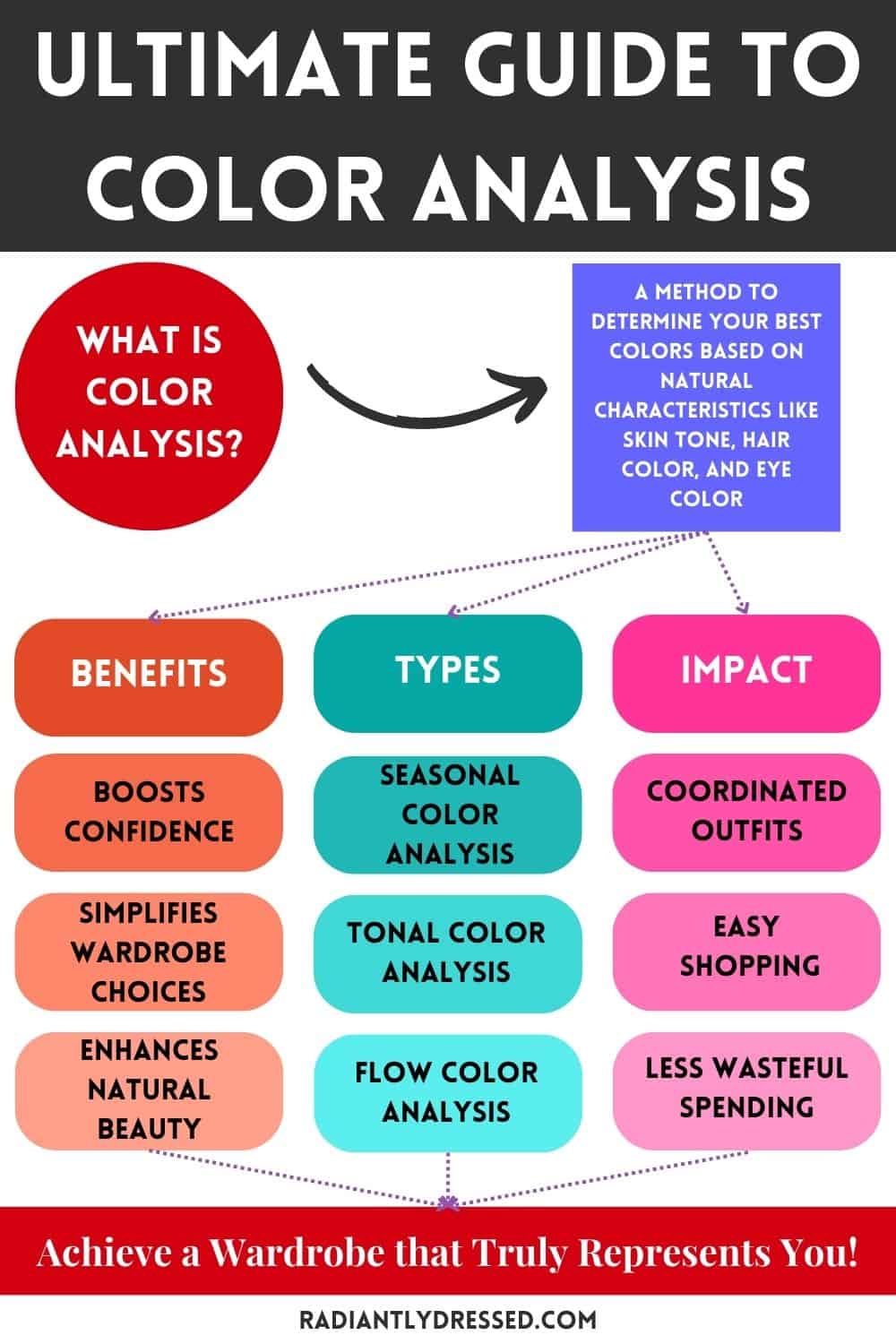
Why is Color Analysis Important?
Benefits for Wardrobe Selection
Understanding your ideal color palette through color analysis transforms the way you approach your wardrobe. It eliminates the guesswork and ensures that every piece you own or purchase complements your natural beauty. Over time, this curated approach leads to a cohesive wardrobe, making outfit selection a breeze. You’ll find that even mixing and matching becomes effortless when your closet is populated with colors that flatter you.
Impact on Self-Esteem and Confidence
The power of color goes beyond mere aesthetics; it significantly impacts your self-esteem and confidence. When you wear colors that enhance your natural features, you not only look good, but you also feel good. The compliments and positive attention you receive become affirmations that reinforce a healthy self-image. With the right colors, you’re not just dressed; you’re powerfully dressed.
Time and Cost Efficiency
Investing in a color analysis saves you both time and money in the long run. With a targeted color palette, you’ll bypass items that don’t suit you, reducing wasteful spending on clothes that end up collecting dust in your closet. This efficiency extends to your daily routine as well; when every item in your wardrobe works together, getting dressed becomes a quick and enjoyable part of your day, rather than a time-consuming chore.
Additional Benefits of a Color Palette
Having a personalized color palette has benefits that extend beyond the closet. It can aid in decision-making for home decor, personal branding, and even professional presentations. Knowing your ideal colors can help you create a cohesive look and feel in every aspect of your life, contributing to a more harmonious personal and professional presence.
The Color Analysis Process
Draping Method
The draping method stands as the gold standard for color analysis. Typically conducted during an in-person consultation, this method involves physically draping fabrics of different colors close to your face to observe their impact on your complexion. While the real-time results and personalized approach are unparalleled, the accuracy is highly contingent upon the analyst’s expertise, impartiality, and lack of bias.
If you’re interested in trying the draping method at home, start by gathering as many different colored fabrics as you can. Pull your hair back to isolate the colors near your face and use good, natural lighting. Drape each fabric under your chin and observe the subtle changes to your skin tone.
You may notice certain colors cause a yellow or green cast, make blemishes or wrinkles more noticeable, or make you appear tired. Capture photos of each test and compare them side-by-side to identify patterns: are the more flattering colors mostly warm, bright, light, or dark?
Although this approach is often time-consuming and can be on the more expensive side, it’s widely regarded as the most effective and accurate means of determining your best colors.
Virtual Color Analysis
Digital or online color analysis is a fantastic option for those seeking expert guidance without the time or geographical constraints of in-person consultations. When conducted under the right conditions and by a reputable online analyst, this method can yield impressively accurate results. Your analyst will guide you in taking the correct photos and employ a multi-faceted approach to ensure a well-rounded analysis.
However, it’s essential to note that the method does have limitations. Inaccurate photos or relying solely on app-based color pickers can lead to less-than-perfect results. Therefore, the success of a digital analysis heavily depends on following the professional guidance you receive.
Inaccurate Methods of Color Analysis
- Vein Color Test: A popular but unreliable method is looking at the color of your veins to determine your undertone. This is misleading because vein color can be affected by various factors like lighting and skin overtone color.
- Silver vs. Gold Test: The notion that if you look good in gold you must have warm undertones and if you look good in silver you must have cool undertones is overly simplistic. Many people look good in both because they are quite neutral.
- The White Paper Test: Holding up a white paper next to your face to determine your coloring can be influenced by the lighting conditions and the shade of the paper, making it an unreliable test.
- Hair and Eye Color: While these can provide clues, they should not be the sole basis for determining your color season. These factors don’t always align neatly with skin undertones.
- Online Quizzes: Many online quizzes offer quick results but often lack the nuance needed for an accurate color analysis.
Avoid falling into the trap of these quick but misleading methods. Trusting them may lead you down the wrong path in your color journey.
Core Components of Color Analysis
Skin in Color Analysis
When diving into color analysis, your skin tone takes center stage. It’s shaped by the melanin levels in your skin, producing a spectrum from fair to dark. But it’s the undertones—those subtle hues just beneath your skin—that really dictate how colors interact with your complexion.
Cool undertones have a bluish tint, while warm undertones appear more reddish. Don’t forget about overtones, which add another layer of complexity. These could range from shades of blue, red, pink, yellow, beige, gray, or even violet. Sometimes the interplay between overtones and undertones can create unique complexions, like the olive skin tone, which blends a blue undertone with a yellow overtone.
Factors like sun exposure, aging, and skin conditions can also influence your skin tone, occasionally making it challenging to pinpoint your true undertones. Despite these variables, the principle remains: cool undertones harmonize with blues, greens, and purples, while warm undertones work well with reds, oranges, and yellows. If you’re neutral, you’ve got a broader palette to play with.
In summary, grasping your skin tone and undertone is a cornerstone in color analysis. By picking colors that accentuate both, you’re not just putting on clothes—you’re showcasing your natural beauty.
Eyes in Color Analysis
When it comes to color analysis, your eye color can play a significant role in determining which colors are most flattering for you. The portion of the eye that is primarily analyzed during color analysis is the iris, which is the colored portion surrounding the pupil. The unique characteristics of your eyes can help guide you through your color analysis.
When we talk about color analysis, it’s easy to overlook the vital clues that eye patterns provide. Rather than just focusing on the color of the iris, it’s the unique patterns within the eye that offer insightful hints about your best seasonal colors. Think of these patterns as unique as fingerprints, each offering a roadmap to your individual color palette.
In my experience of analyzing over 100 clients, I’ve often found that the primary or secondary season for a person can be discerned through these eye patterns. This means they’re not just an aesthetic detail but a practical guide to narrowing down your color options. However, it’s crucial to remember that this is a starting point, a clue if you will, rather than the final word on your seasonal color match.
By understanding the intricate relationship between your eye patterns and your ideal color range, you’re not just making educated choices for your wardrobe, makeup, and accessories. You’re tapping into an organic system that reflects who you are at your core, thereby enhancing your natural beauty.
Hair in Color Analysis
A common assumption in the field of color analysis is that your hair color plays a decisive role in determining your best colors. While some systems use hair color as part of their process, this perspective often leads to misconceptions. Phrases like “warm hair colors should wear warm colors” or “cool hair colors should wear cool colors” might sound intuitive, but they oversimplify the situation.
The truth is, your skin tone is the primary factor in color analysis. The skin’s undertones are what truly matter when determining your ideal season, and not abiding by this principle can result in a skewed analysis. There are indeed blonde Winters and dark-haired Light Summers; it’s not the hair but the skin that decides your season.
That said, hair color isn’t entirely irrelevant; it can be useful for harmony-based analysis. For example, your natural hair color could guide you in choosing the right neutrals to include in your wardrobe.
In essence, while hair color offers some cues, it’s your skin tone that holds the definitive answer in color analysis. By focusing on the attributes of your skin, you’re more likely to find the colors that truly enhance your natural beauty.
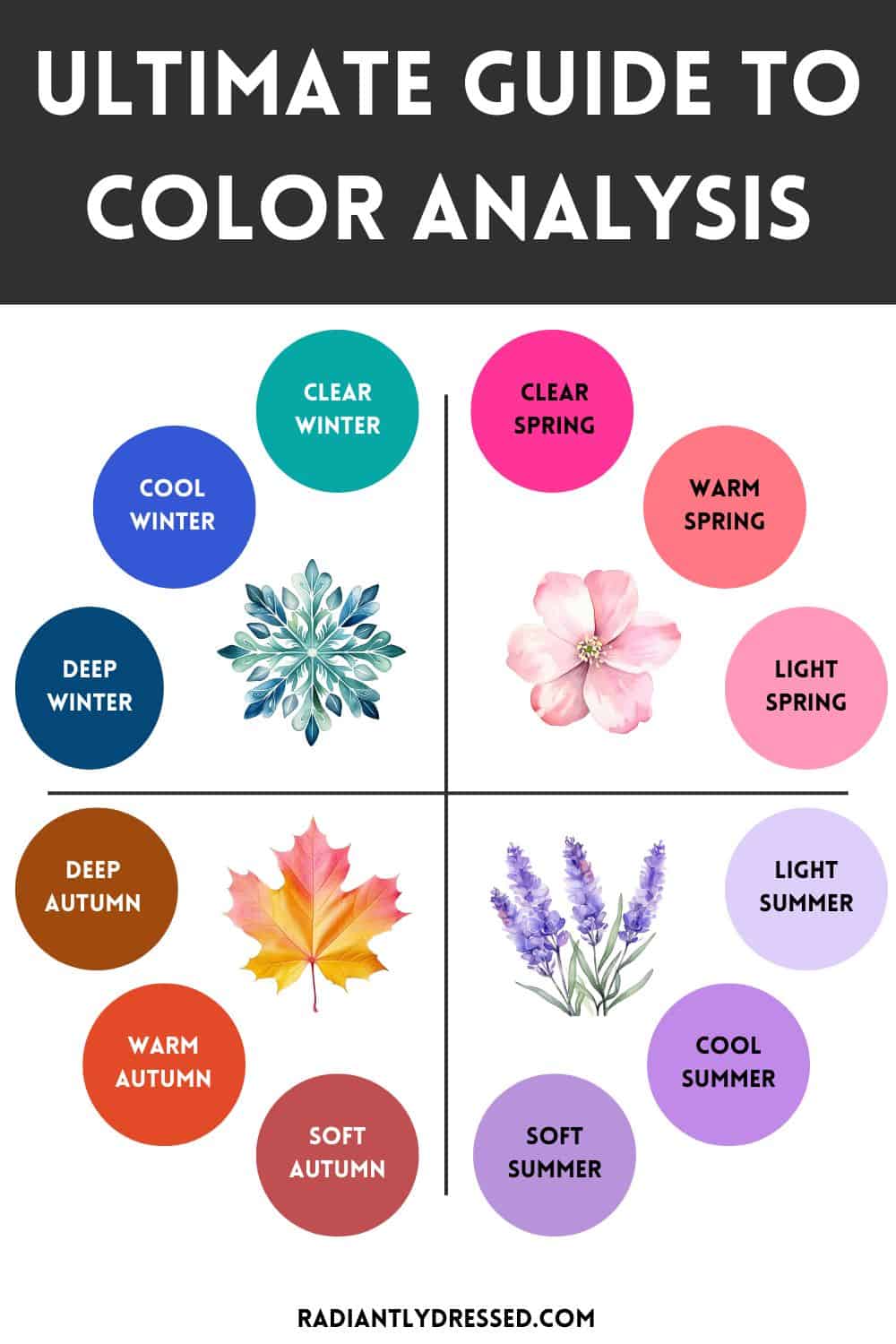
The 12 Seasons in Color Analysis
Spring
If you have warm undertones and light coloring, you may be a Spring. Spring colors are bright and clear, with a warm, red undertone. It is common for springs to have pink or yellow overtones.
Pastel and light colors generally work well for Springs, as do warm and bright hues like coral, peach, and golden yellow.

Spring is further broken up into 3 sub-seasons as follows:
- Clear Spring – considered one of the brightest seasons, clear spring is marked by warm hue, light-medium value, and bright chroma. This season’s secondary is winter, thus they borrow some depth and neutrality from their flow season. In North America, clear spring is one of the rarer seasons, making up approximately 6% of the population.
- Warm or True Spring – this is one of the true, or original seasons. Warm Spring is marked by warm undertones and overtones, light value, and bright chroma. This season’s secondary is autumn, so they are truly warm and may have a bit of depth from their flow season. Warm springs make up about 9% of the population in North American countries.
- Light Spring – this is one of the lightest seasons, and their attributes are warm hue, light value, and medium-bright chroma. The secondary for this season is summer, so they pull in the pastel and muted nature from their flow season. Light Spring is one of the rarest types, comprising only 5% of the population.
Summer
Summers have cool undertones and light to medium coloring. Summer colors are soft and muted, with a cool, blue undertone.
Pastels and cool colors like lavender, rose, and powder blue look great on Summers, as do muted shades like taupe and gray.
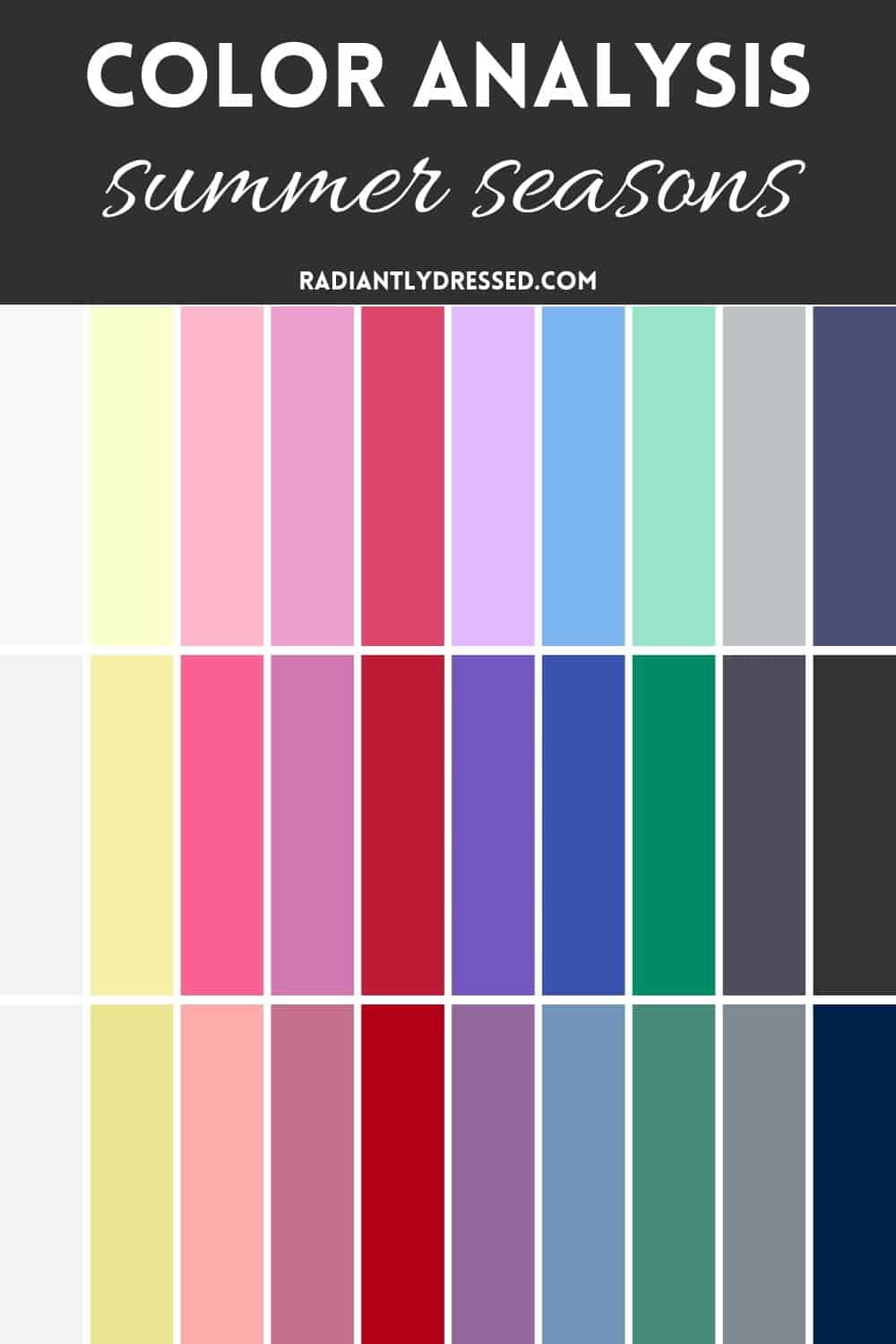
Summer is further broken up into 3 sub-seasons as follows:
- Light Summer – considered one of the lightest seasons, light summer is marked by cool hue, light value, and slightly bright chroma. This season’s secondary is spring, thus they borrow some warmth and neutrality from their flow season. In North America, light summer is largely prevalent, making up approximately 10% of the population.
- Cool or True Summer – this is one of the true, or original seasons. Cool Summer is marked by cool undertones and overtones, light-medium value, and medium chroma. This season’s secondary is winter, so they are truly cool and may have a bit of added brightness from their flow season. Cool summers make up about 8% of the population in North American countries.
- Soft Summer – this is one of the most muted seasons, and their attributes are cool hue, medium-dark value, and muted chroma. The secondary for this season is autumn, so they pull in the warm and darker nature from their flow season. Soft Summer is a more common type, comprising about 10% of the population.
Autumn
Autumns have warm undertones and medium to dark coloring. Autumn colors are rich and warm, with a red undertone.
Earth tones like olive, rust, and mustard complement Autumns, as do warm jewel tones like deep red and burnt orange.
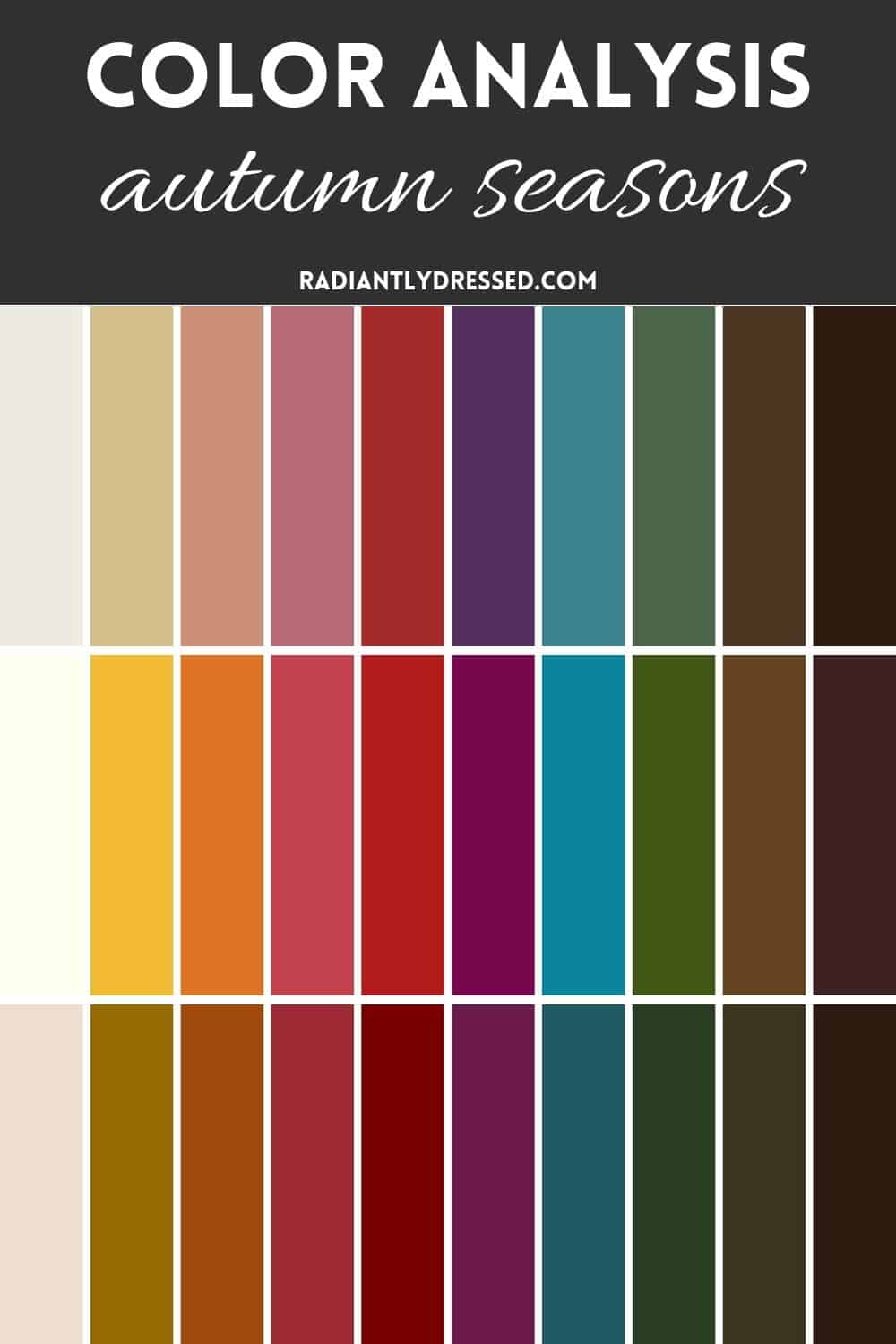
Autumn is further broken up into 3 sub-seasons as follows:
- Soft Autumn – considered one of the softest seasons, soft autumn is marked by warm hue, medium-dark value, and muted chroma. This season’s secondary is summer, thus they borrow some coolness and neutrality from their flow season. In North America, soft autumn is prevalent, making up approximately 9% of the population.
- Warm or True Autumn – this is one of the true, or original seasons. Warm Autumn is marked by warm undertones and overtones, medium-dark value, and slightly muted chroma. This season’s secondary is spring, so they are truly warm and may have a bit of added brightness from their flow season. Warm autumns make up about 8% of the population in North American countries.
- Deep Autumn – this is one of the darkest seasons, and their attributes are warm hue, dark value, and medium chroma. The secondary for this season is winter, so they pull in the cool and brighter nature from their flow season. Deep Autumn is the most common type, comprising about 12% of the population.
Winter
Winters have cool undertones and dark coloring. Winter colors are bold and dramatic, with a cool, blue undertone.
Bright and clear colors like royal blue, emerald green, and fuchsia look great on Winters, as do cool neutrals like black and white.
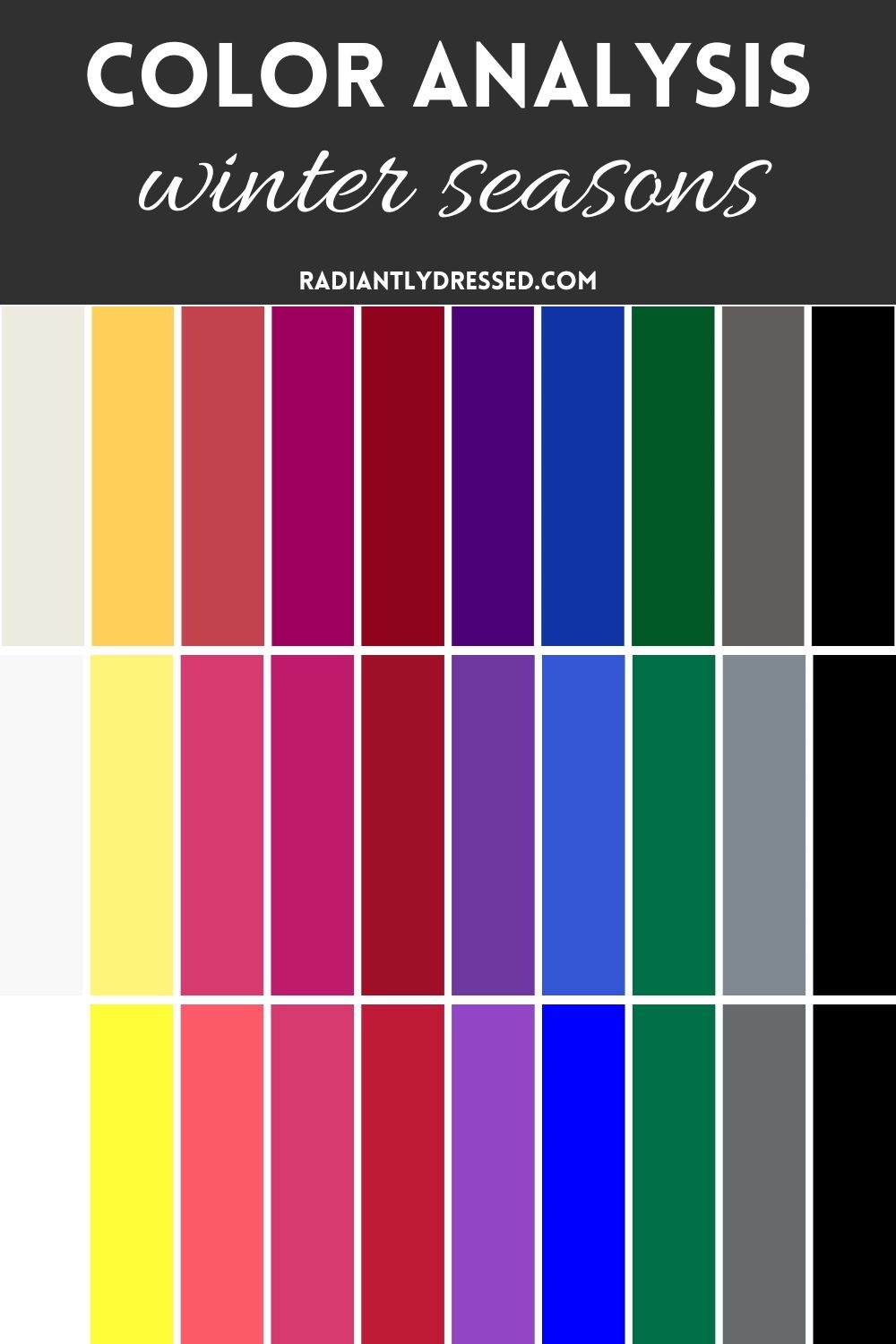
Winter is further broken up into 3 sub-seasons as follows:
- Deep Winter – considered one of the darkest seasons, deep winter is marked by cool hue, dark value, and slightly bright chroma. This season’s secondary is autumn, thus they borrow some warmth and neutrality from their flow season. In North America, deep winter is prevalent, making up approximately 10% of the population.
- Cool or True Winter – this is one of the true, or original seasons. Cool Winter is marked by cool undertones and overtones, medium-dark value, and bright chroma. This season’s secondary is summer, so they are truly cool and may have a bit of added lightness from their flow season. Cool winters make up about 9% of the population in North American countries.
- Clear Winter – this is one of the brightest seasons, and their attributes are cool hue, medium-dark value, and bright chroma. The secondary for this season is spring, so they pull in the warm and lighter nature from their flow season. Clear Winter is one of the rarest types, comprising about 5% of the population.
Knowing your seasonal color palette is a powerful step in enhancing your natural beauty through your wardrobe, makeup, and accessories. While this guide provides an overview, we highly recommend diving deeper into each of the 12 seasons for a more comprehensive understanding.
Online Color Analysis
Online color analysis offers a convenient and accessible method to explore a personal color palette. However, the quality of the results can vary based on the methodology and expertise of the service. Here’s an overview:
Benefits
- Convenience: An online format allows for flexibility, enabling completion at one’s own pace and in the comfort of home.
- Accessibility: Without the need for scheduling or travel, all that’s required is internet access.
- Affordability: Online options often cost less than in-person consultations.
Drawbacks
- Limited Personalization: Automated platforms may lack the nuanced evaluation that an expert can provide.
- Potential Inaccuracy: Without professional guidance, there’s a risk of selecting unflattering colors that do not align with an individual’s seasonal classification.
- Lack of Comprehensive Guidance: Many online tools offer a limited scope, failing to explore personal style, wardrobe planning, or holistic image consulting.
Recommended Tools
For a more personalized and accurate experience, consider the following services:
- DIY Program: This option provides detailed guidance through proven methodologies for self-directed color analysis, ideal for those who enjoy the journey of self-discovery.
- Done-For-You Service: For a comprehensive and professional experience, this virtual analysis employs a multi-modal method to deliver a highly accurate and personalized color analysis.
By opting for a more comprehensive online color analysis, individuals are more likely to receive a nuanced and enriching understanding of their ideal color palette.
Building Your Personal Color Palette
Creating a personalized color palette is more than just a stylistic choice; it’s a strategic approach to a more cohesive and functional wardrobe. By defining a set of go-to colors, individuals can achieve several benefits:
- Cohesion: A well-curated color palette ensures that all the items in a closet work well together, making it easier to mix and match.
- Efficiency: Having a limited color range eliminates the guesswork when shopping and putting together outfits, saving time and reducing decision fatigue.
- Maximized Use: When each item in a wardrobe is part of a broader color scheme, the chances of it being worn regularly increase, thereby offering better value for money.
- Aesthetic Appeal: A consistent color palette naturally elevates the look of a wardrobe, creating a more refined and polished appearance.
By carefully selecting colors that align with one’s natural features and personal style, it’s possible to create a stunning wardrobe that offers both variety and simplicity.
The Elements of a Color Palette
A strategic color palette is comprised of three critical elements: neutral colors, signature colors, and accent colors. Each serves a distinct purpose, making your wardrobe versatile and cohesive.
- Neutral Colors: These colors act as the backbone of your wardrobe. They’re foundational, easy to mix, and serve as the base for most outfits. Investing in quality pieces in neutral shades like black, white, gray, navy, and beige is wise. They’re often used in versatile clothing items such as trousers, skirts, and jackets. Each season has a set of neutrals that work best for their type.
- Signature Colors: Derived from your best colors in seasonal color analysis, signature colors deeply resonate with your individual style. These are the shades that make you look and feel your best, embodying your unique sense of self. You’ll want to invest in these colors for both foundational and statement pieces.
- Accent Colors: This category allows you to be playful and experiment. While these may not be your ‘best’ colors according to your seasonal analysis, they bring a dash of excitement to your outfits. Accent colors are great for incorporating current color trends or colors you enjoy for fun. These shades often appear in smaller, less expensive items like accessories or statement pieces you wear less frequently.
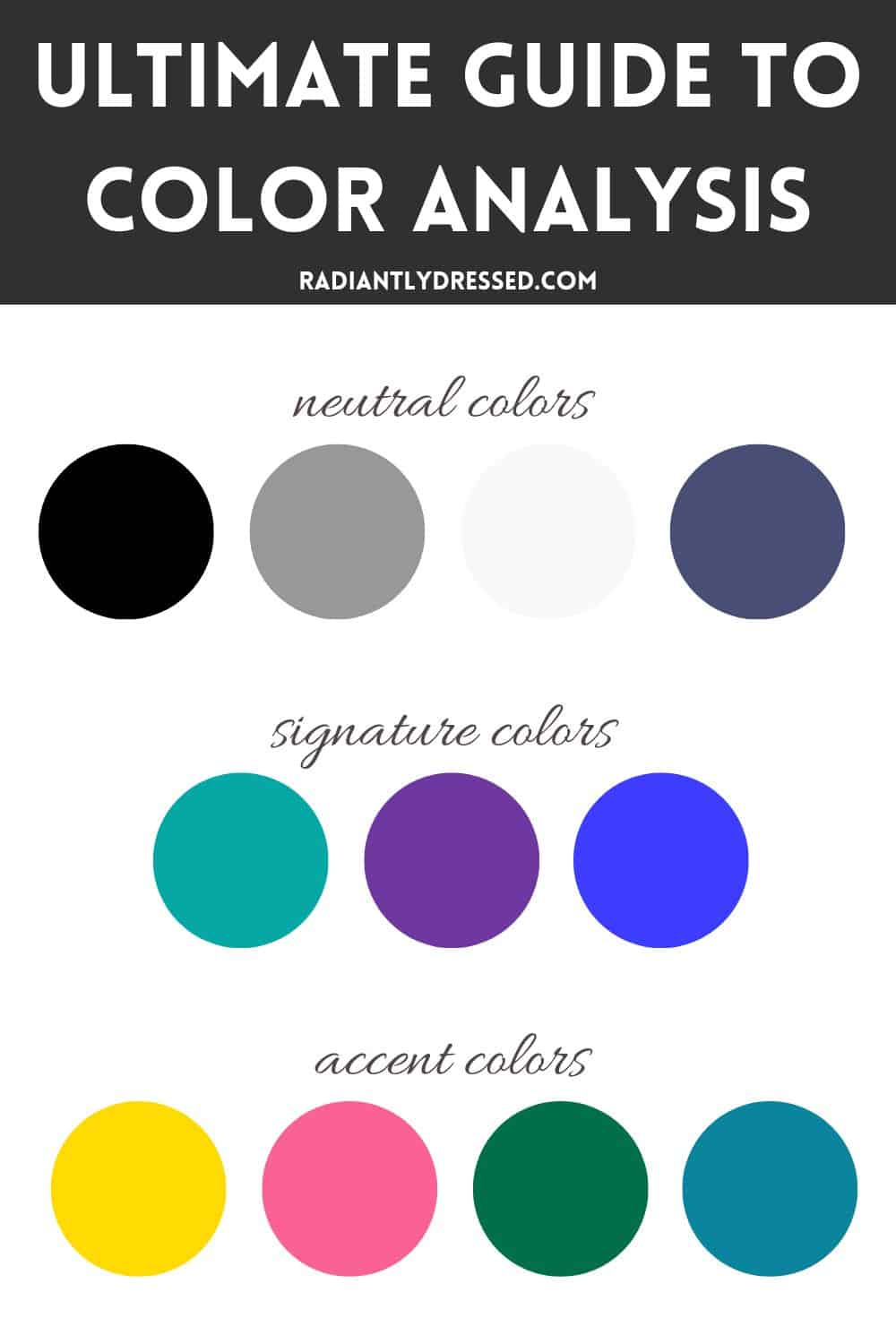
By consciously choosing clothing and accessories based on these three elements, you create a wardrobe that’s not only versatile but also uniquely tailored to you. A well-balanced mix of neutrals, signature, and accent colors enables you to maximize the use of each item in your closet, making everyday dressing a delightful experience.
Special Mention: Universally Flattering Colors
While your personal color palette is shaped by your unique attributes, there are a few shades that are considered universally flattering. These colors tend to complement a wide range of skin tones and hair colors, making them an excellent addition to any wardrobe. Including universally flattering colors like turquoise, soft white, and periwinkle can add a touch of versatility to your style, giving you more options for outfits that turn heads.
Applying Color Analysis in Everyday Life
The magic of color analysis doesn’t stop at defining your color palette. It’s a versatile tool that can significantly influence different facets of your life, from your wardrobe choices to your confidence. Here, we explore how color analysis can be implemented into capsule wardrobes, style uniforms, personal style development, and even decluttering your closet.
Capsule Wardrobes
A capsule wardrobe thrives on simplicity and cohesion, making it a natural fit for color analysis. Once you’ve identified your ideal color palette, curating your capsule wardrobe becomes straightforward. Select key pieces in your neutral and signature colors, ensuring that each item can be mixed and matched. The right colors can simplify your choices, maximizing the utility of each garment while making you look your best.
Style Uniforms
Incorporating color analysis into your style uniform helps you nail down a consistent look that also flatters your natural coloring. Your uniform, whether it’s a specific outfit formula or a particular set of items, becomes more impactful when you know which colors uplift you. Stick with those colors, and you’ll always step out with confidence.
Personal Style Development
Color analysis is instrumental in defining and refining your personal style. Not only does it guide you in picking shades that enhance your natural beauty, but it also helps in coordinating outfits that are both flattering and cohesive. Knowing your ideal color palette can give you the confidence to experiment and develop a wardrobe that reflects your individual style. Choose accessories that complement your coloring, whether they are soft and muted or bright and bold, to add that extra flair to your outfits.
Declutter Clothes Using Color
Color analysis isn’t just for acquiring new items—it’s also beneficial when it’s time to declutter. By focusing on your ideal color palette, you can effortlessly weed out items that no longer serve you. Any pieces that don’t fit within your determined colors can be donated or sold, making room for garments that make you look and feel fabulous.
Color Analysis and Makeup
Color analysis can significantly influence your makeup routine. By choosing makeup shades that align with your color season, you can enhance your natural beauty with confidence. Here’s how:
Know Your Undertone
Understanding your undertone is foundational in color analysis. Your undertone is revealed by the color season you fall into, which is determined by the comprehensive analysis of your eyes, hair, and skin. Generally, the undertones are classified as:
- Cool Undertone: If you belong to a ‘cool’ color season, you’ll usually look good in hues like blues, greens, and purples.
- Warm Undertone: If you’re classified under a ‘warm’ color season, you’ll likely find that reds, oranges, and yellows bring out your best features.
Choose the Right Foundation
Your foundation is your makeup’s starting point, and choosing the correct shade for your undertone is vital.
- Cool Undertone: Look for foundations that carry pink or blue undertones.
- Warm Undertone: For you, foundations with yellow or golden undertones will usually be the most flattering.
Play with Color
Armed with your undertone information, you can confidently choose blush, eyeshadow, and lipstick shades that resonate with your color season.
- Cool Undertone: Consider shades like pink, berry, and plum to elevate your look.
- Warm Undertone: Peach, coral, and bronze are your go-to shades.
Embrace Your Natural Beauty
Remember, color analysis aims to enhance, not to disguise. For example, if you have a cool undertone, try warm-toned eyeshadows to create a striking contrast. If you have a warm undertone, a green color corrector can help neutralize any redness before applying foundation.
By weaving color analysis into your makeup routine, you’ll be positioning yourself to look and feel more confident and beautiful.
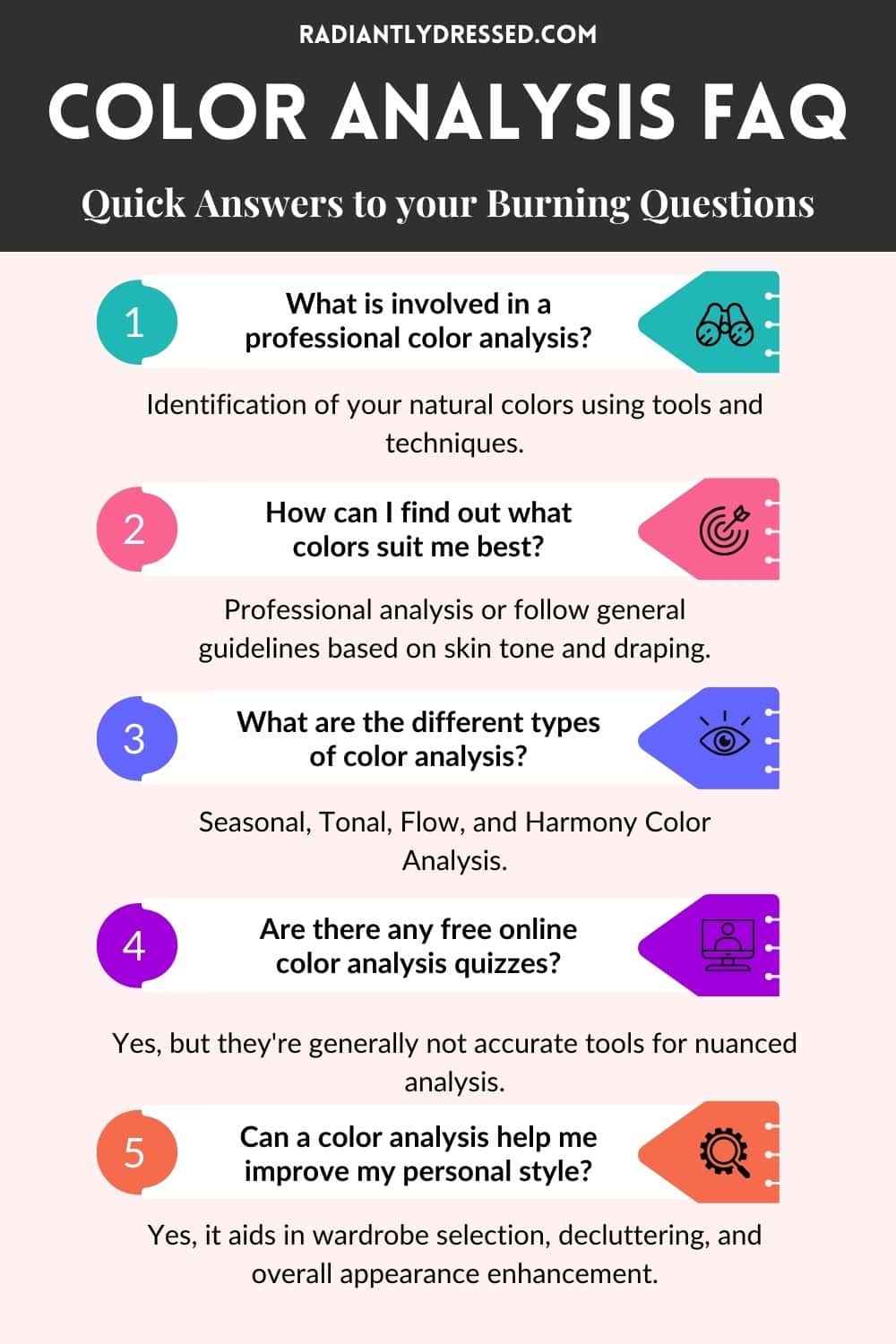
Frequently Asked Questions
What is involved in a professional color analysis?
A professional color analysis is a process that involves identifying the natural color characteristics of your eyes, hair, and skin to determine your color family. A color analyst will use a range of tools and techniques to identify your color family, including draping you in different colored fabrics and observing how they affect your skin tone. The analyst will then provide you with a personalized color palette, which you can use to guide your clothing, makeup, and accessory choices.
How can I find out what colors suit me best?
The best way to find out what colors suit you best is to have a professional color analysis. A color analyst will be able to identify your color family and provide you with a personalized color palette. However, there are also some general guidelines you can follow. For example, people with warm skin tones tend to look best in warm colors, such as red, orange, and yellow, while people with cool skin tones tend to look best in cool colors, such as blue, green, and purple.
What are the different types of color analysis?
There are several different types of color analysis, including seasonal color analysis, tonal color analysis, and flow color analysis. Seasonal color analysis involves identifying your color family based on the four seasons (spring, summer, autumn, and winter). Tonal color analysis involves identifying your color family based on the tone of your skin, hair, and eyes. Flow color analysis involves identifying your color family based on the flow of color in your skin, hair, and eyes.
What is the relationship between capsule wardrobes and color analysis?
Color analysis can significantly contribute to building a capsule wardrobe. By understanding which colors best complement your natural attributes, you can make more informed choices when selecting the limited number of items that will make up your capsule wardrobe. This ensures a more cohesive and versatile collection of clothing.
Can color analysis contribute to defining my personal style and signature style?
Yes, color analysis can be pivotal in defining your personal style. Knowing the colors that suit you can make you feel more confident and align your wardrobe choices with your innate style characteristics. This insight can be a fundamental building block for developing your signature style.
Are there any free online color analysis quizzes?
Yes, there are many free online color analysis quizzes available. However, it’s important to note that these quizzes are not as accurate as a professional color analysis. They may give you a general idea of your color family, but they cannot take into account the nuances of your skin tone, hair color, and eye color.
Can a color analysis help me improve my personal style?
Yes, a color analysis can help you improve your personal style by providing you with a personalized color palette. By wearing colors that complement your natural coloring, you can enhance your overall appearance and feel more confident in your clothing choices.
Is it worth investing in a professional color analysis?
If you are serious about improving your personal style and want to make sure you are wearing colors that complement your natural coloring, then investing in a professional color analysis is definitely worth it. A color analysis can provide you with a personalized color palette that will guide your clothing, makeup, and accessory choices for years to come.
Final Thoughts on Color Analysis
Colors are more than just hues you see; they hold the power to shape your mood, emotions, and even your behaviors. Studies in color psychology affirm this, revealing how varying colors can impact both our psychological and physiological state.
In the realm of personal style, color plays a pivotal role. It’s a form of self-expression, a way to articulate who you are without saying a word. Through color analysis, you can identify the colors that not only flatter you but also resonate with your personality.
By narrowing down your most complementary colors based on your skin tone, hair color, and eye color, you set the stage for a wardrobe that elevates your natural features and aligns with your personal style.
In closing, grasping the power of color is crucial for a wardrobe that’s both expressive and flattering. Employing color analysis as a tool helps you make empowered choices that enhance your features and echo your unique style.
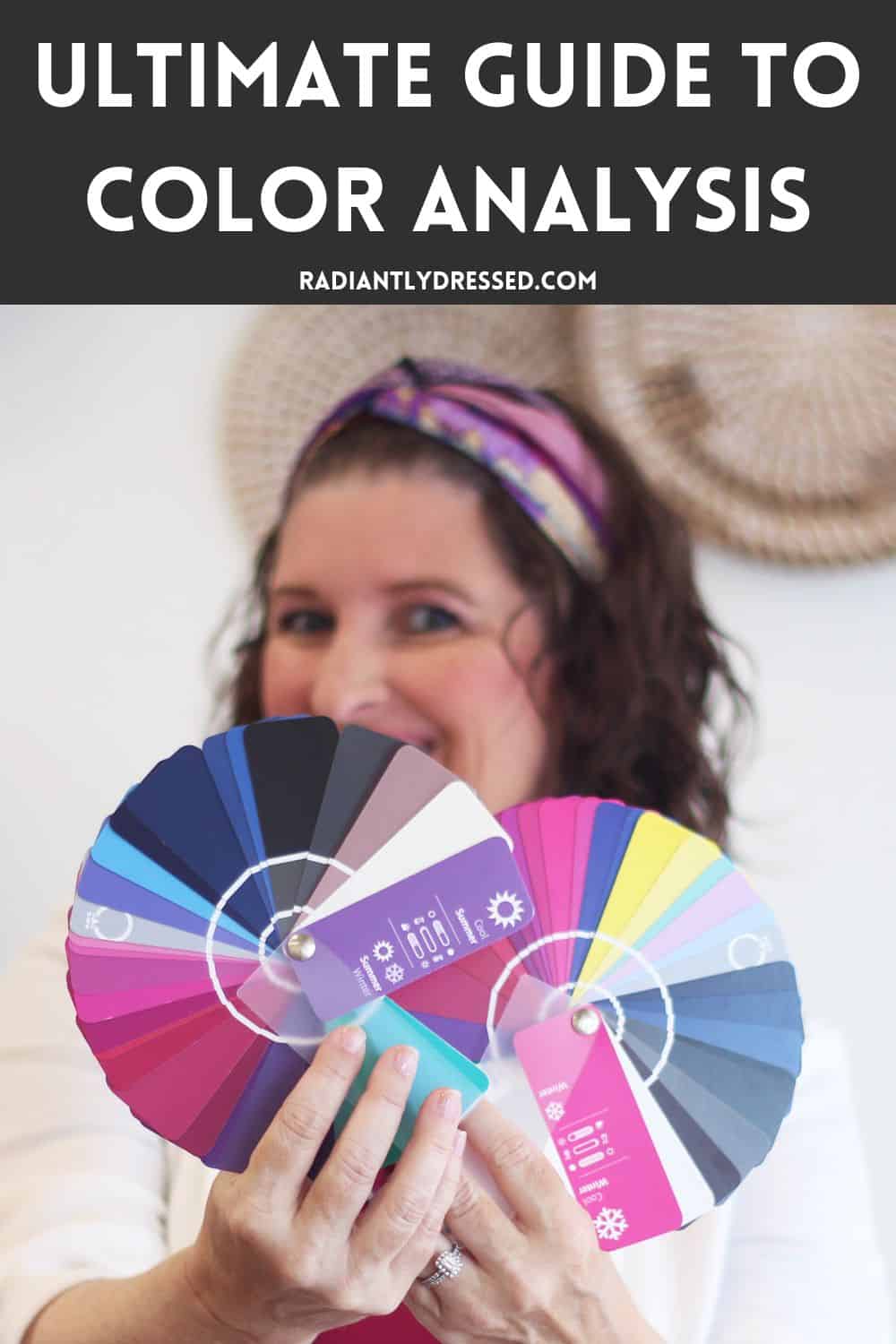
Understanding the principles of color analysis empowers you to create a simplified, stylish wardrobe that complements your natural beauty.
Stacey is the owner and creator behind Radiantly Dressed. She is a certified image consultant and AICI member focusing on creating simplicity in wardrobes via color and style.

